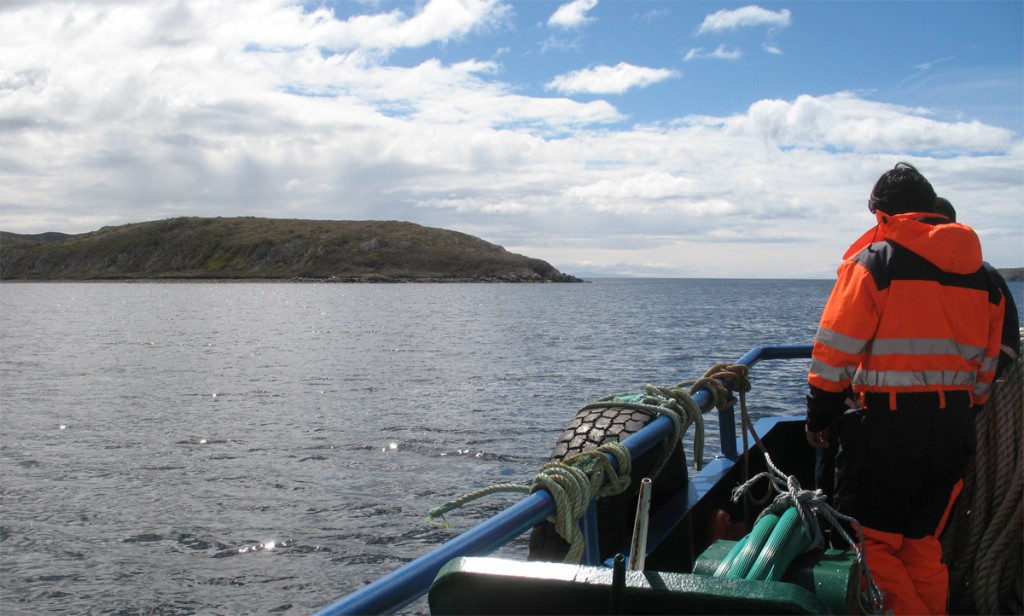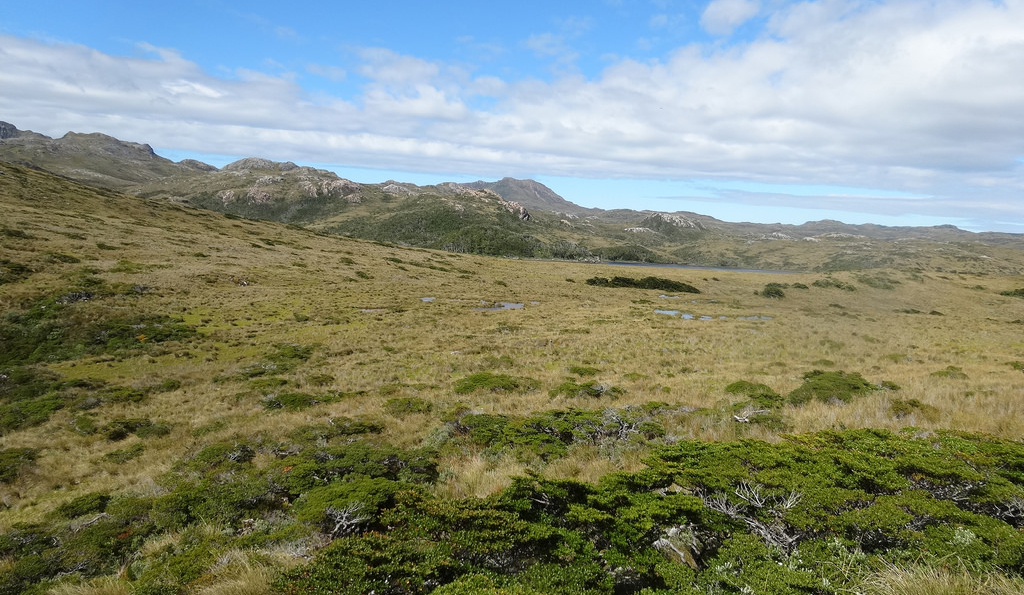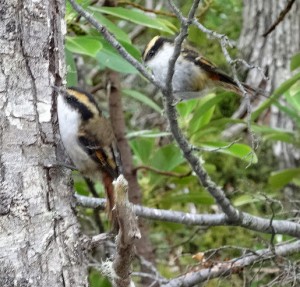From the Field: Bill Buck in Cape Horn 2014, Part 4
Posted in Travelogue on March 14, 2014 by Bill Buck
William R. Buck, Ph.D., is the Mary Flagler Cary Curator of Botany at The New York Botanical Garden. Every January for the last three years, Dr. Buck, a moss specialist, and a team of colleagues have journeyed to the Cape Horn region at the southern tip of South America, to document the area’s rich diversity of mosses and search for new species.
January 12, 2014; Isla Hoste, Bahía Orange, Caleta Duck, Chile (55°32’S, 68°05.5’W)

We left Coloane a bit before 8 p.m. yesterday evening. Navigating down the southwest arm of the Beagle Channel, we got our first opportunity to see the string of glaciers that crown the rugged peaks. Fortunately, the waters were calm and the temperature relatively warm, keeping many of us on deck to enjoy the scenery in the dimming light.
We awoke shortly before 7 a.m. when the ship’s engines finally shut down. Coming out onto the deck, we were greeted by Bahía Orange, the site where an early French expedition had stopped. We were anchored in Caleta Misión, the exact place where the French had sought shelter over a century ago. Although the sky was lightly spitting, the day promised pleasant weather, at least according to the rising barometer. I hoped this would mean we could get back to our original itinerary and head out to Isla Hermite, but the northeastern direction of the wind meant the seas would be rough. The captain, Ernesto, and I went over the maps to determine where we should go in the coming days.
The tentative plan is to visit bays south of here tomorrow, still on the Hardy Peninsula of Isla Hoste. The following day we hope to head north and hit a few more places before changing direction and moving east to the south shore of Navarino. From there, we’ll round the east end of Navarino to reach Puerto Williams. But first we have today’s activities.

By 9 a.m., we were ready to set out for a day of collecting. Since I have collected here before, concentrating mainly on the Magellanic tundra, I was drawn to the forest this time around. Right away small song birds greeted us, chirping away and hopping from branch to branch only inches from our faces. It’s great to be in a region where the wildlife considers us a curiosity more than something to fear. I decided that, instead of collecting the same species as I had on my previous visit, I would focus on liverworts and lichens until we reached an unfamiliar site. This allowed me to meander through the forest, drawn by interesting microhabitats to collect whatever caught my eye.

After having taken classes at Eagle Hill—a scientific and literary institute located in the distant reaches of Maine—about fungi that grow on mosses and lichens, I welcome the opportunity to search out the very small. I am constantly amazed at how minute life can be and completely immerse myself in gazing at specimens through my hand-lens. It’s not that different from an astronomer looking at the stars. However, these gems are right in front of us—even if they are all but invisible. Immediately before starting this trip, I read Robin Kimmerer’s new book Braiding Sweetgrass, in which she writes about the reciprocal relationship between humans and the natural world. Although I don’t ask these organisms for permission to collect them, I do respect their right to live, and I always replace my divots when deciding not to collect something. More often than not, I look at something and let it be, gathering only those species that spark my interest.
And so the morning progressed until the Zodiac boat arrived to take me back to the ship. After another amazing lunch, we moved around a small point of land to Caleta Duck. Once again I chose the forest and didn’t worry myself about looking only for mosses but rather spent the next two hours mesmerized by the miniature life that surrounded me. At times like this, I know I could not have been anything but a field biologist.
I was under the impression that we would spend the night where we were, but we’ve been moving for the last half-hour. It turns out that we are still in Bahía Orange, which is quite large, but have moved on to Puerto Seguro. My attitude in general has improved after such a transcendental day, during which I found that I could still be transfixed even in locales that I’ve visited before. A good lesson if ever there was one!
Past Expedition Entries:
Photos courtesy of Barbara Murray (header image) and Barb Andreas.

